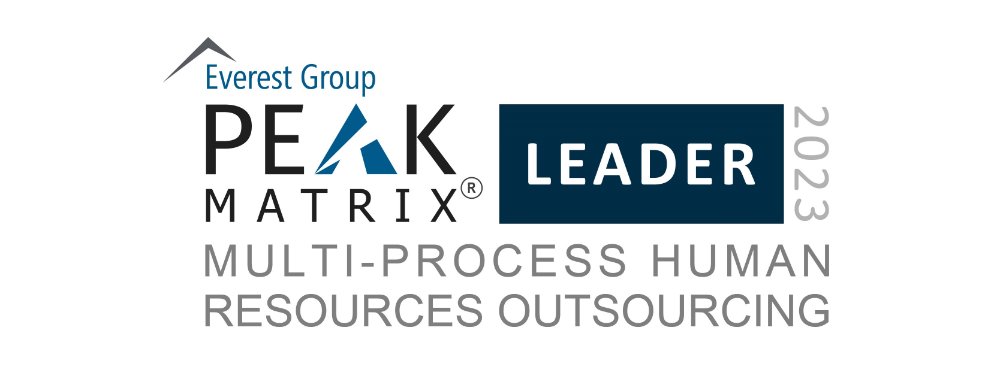People come first.
Your company’s success depends on giving your employees what they need to do more with technology—more efficiently, more flexibly and more securely. Openness and collaboration are the new ways of working, and the cloud facilitates and enables this in ways never imagined. Software as a service (SaaS) has become the primary means for organisations to store, run and analyze datasets, making critical business decisions easier, effective and more successful. Not only does it reduce the amount of time spent on manual HR and finance processes, but it allows your business to make real-time, data-driven decisions to attract top talent and enable growth.
Many companies have already moved to the cloud, and cloud-based finance and HR applications have become the new standard expectation. In fact, moving to a cloud environment is generally no longer a question of if for organisations, but when.
Whether you’re just getting started or actively considering a move, we’ll take a look at the cloud from a few different perspectives to see what opportunities lie ahead for you and your organisation.
Thinking about moving to the cloud?
We're here to help.
A new resource for HR: How is your HR organisation keeping pace with the movement toward the cloud?
of organisations have at least one cloud-based HR application today.1
of organisations plan to replace their talent management applications in the next two years as these applications continue to experience the highest percentage of functionality gaps.2
The cloud has gone from a concept to a reality, with over 50% of organisations deploying cloud-based HR applications.3
The best talent—that is, the talent that you, your competitors and other organisations all want—is in high demand. And once you have it, identifying how to keep it and make the most of it can be the pivotal difference in reaching organisational goals or not.
From targeting the talent matches you desire to identifying the skills and experience you need most for critical roles, both now and in the future, the cloud enables this in a way not previously available. The cloud also enables your ability to automate processes that make filling positions with more qualified, experienced talent easier. It allows HR teams to discover stronger candidates, identify at-risk employees and pinpoint engagement problems more effectively to prevent future problems. Consider the kinds of initiatives you have available that highlight your organisation as reputable and desirable for potential employees, such as being considered a “best place to work,” and how these initiatives attract and retain the talent your organisation needs to succeed. This could include best in class self-service technology, continuous job training and competitive compensation. The cloud makes it easier to put programs like these in place and measure success metrics established for each initiative.
The benefits of the cloud don’t stop there. One of the beautiful things about a cloud platform is that you can better provide the appropriate tools and technology for each employee. Consider the challenges of the multi-generational workplace where some demand more technology while others want to keep it simple.
Meeting other expectations that help keep employees engaged are easier too. People want their business technology to be as good as (or better than) what they’re used to at home. With the cloud, applications are updated immediately and automatically. Mobile access and collaboration are seamless as well, with no need for multiple logins for different systems. In addition to these kinds of daily communication and collaboration, special events, like open enrollment, can be handled more smoothly both for HR teams and for employees.
Consider what access to rich data and analytics can mean in responding faster—with more informed decisions—to the needs of the business. This can help you position HR as a critical value creator for the organisation.
Information to make better decisions: How is your company integrating the cloud?
of IT leaders see the CIO role becoming more digital- and innovation-focused.4
increase in the adoption of RPA tools in the last year.5
of organisations are using HR systems to facilitate information gathering or process efficiencies.6
Where would your company be without the power of data and the analytics to fully understand and utilise it effectively? The cloud enables you to make better use of the data you have in ways that drive business needs.
The protection and privacy of your data can be enhanced as well. Cloud computing solutions offer strict regulatory and compliance standards, data recovery and back-up options, and robust identity and access control tools.
A world of emerging technologies is within reach via the cloud. Artificial intelligence, machine learning and predictive analytics are just a few of the advances that you can deploy more effectively and more easily—no matter what the size of your IT infrastructure. And blockchain technology can enable you to do it more securely by distributing digital information without allowing it to be copied.
Migration to a cloud platform may require your organisation to modify some company processes and policies, but it also may inspire new ways of thinking when using and sharing information—and how people work in general.
This makes financial sense: How are you bringing financial operations into the age of cloud computing?
of organisations have the cloud in use for their finance system, with 15% moving in the next 12–24 months and 23% evaluating a move.7
of CFOs report lagging ROI from technology investments due to long implementation and slow adoption.8
of decision-makers wish management reports gave them information more relevant to their part of the business.9
Given the critical role of finance in providing strategic insight that drives business decisions, finance must identify the data it needs and analyze it for useful insights. The cloud brings greater power to this task.
Machine learning—algorithms that can learn through patterns and then make predictions based on those patterns of data—has become more affordable through the cloud. The advantage over static program instructions is that these data-driven decisions can improve over time without human intervention and additional programming. Additionally, the cloud provides access to real-time data and analytics, allowing finance to move away from Excel consolidation and reporting and focus on providing the business with insights that enable growth.
The cloud also facilitates keeping up with and complying with the ever-changing rules, regulations and statutes surrounding finance in every industry and company. For example:
- Localised regulatory changes occur frequently, especially in Latin America, Asia-Pacific, Europe, the Middle East and Africa.
- SEC and other filings must be completed correctly and on time. Lack of compliance can lead to prison time or being fined personally.
These built in audits and controls don’t require extra maintenance or costs to enable them. This allows organisations to achieve a much higher control environment, eliminate unnecessary or out of policy spend and reduce audit fees and costs.
The increasing maturity of cloud-based solutions, including an established track record in security controls, makes the cloud an increasingly confident choice for finance organisations. When it’s time to upgrade or replace core financial applications, the cloud is the logical move.
Moving to the cloud: The basics
- Define your requirements.
- Gather an overview of cloud technology providers.
- Understand the strengths and weaknesses of different solutions for your needs.
- Conduct a fit gap against possible solutions.
- Assess and select an enterprise technology provider.
- Identify and develop an enterprise technology strategy and roadmap.
- Identify and develop a mobile strategy and roadmap.
- Define future system requirements.
- Conduct a cloud transition readiness assessment.
- Take action to prepare for migration.
This list is not a linear checklist, as it represents an iterative process. It is a summary of the key components.
Together, let’s see what’s next.
When you consolidate HR and finance data in one place, coordinated with IT, the data and analytics now at hand can help you attract and retain the talent you want, as well as make more informed decisions that drive your business forward.
There’s one more important element: the right partner.
Let’s talk about where you are now—and where you want to go—with cloud transformation. Our advisory services can map out the optimal cloud solution for your organisation and prepare you for migration.
Of course, all change brings risk, but there is also the risk of falling behind. That’s why we’ll mitigate the shortand long-term risks for you so you can move to the cloud confidently.
Connect with us today to learn more. HRandFinancialSolutions@alight.com
Sources
1, 2, 3 Sierra-Cedar, “The Sierra-Cedar 2019–2020 HR Systems Survey White Paper, 22nd Annual Edition”
4 CIO.com, “The biggest issues CIOs face today”
5, 6, 7 Sierra-Cedar, “The Sierra-Cedar 2019–2020 HR Systems Survey White Paper, 22nd Annual Edition”
8 Gartner, “Top Initiatives in 2020 Gartner for Finance for large company CFOs”
9 Gartner, “2019 Gartner Panel Survey of Decision Makers on Data Management Practices”


